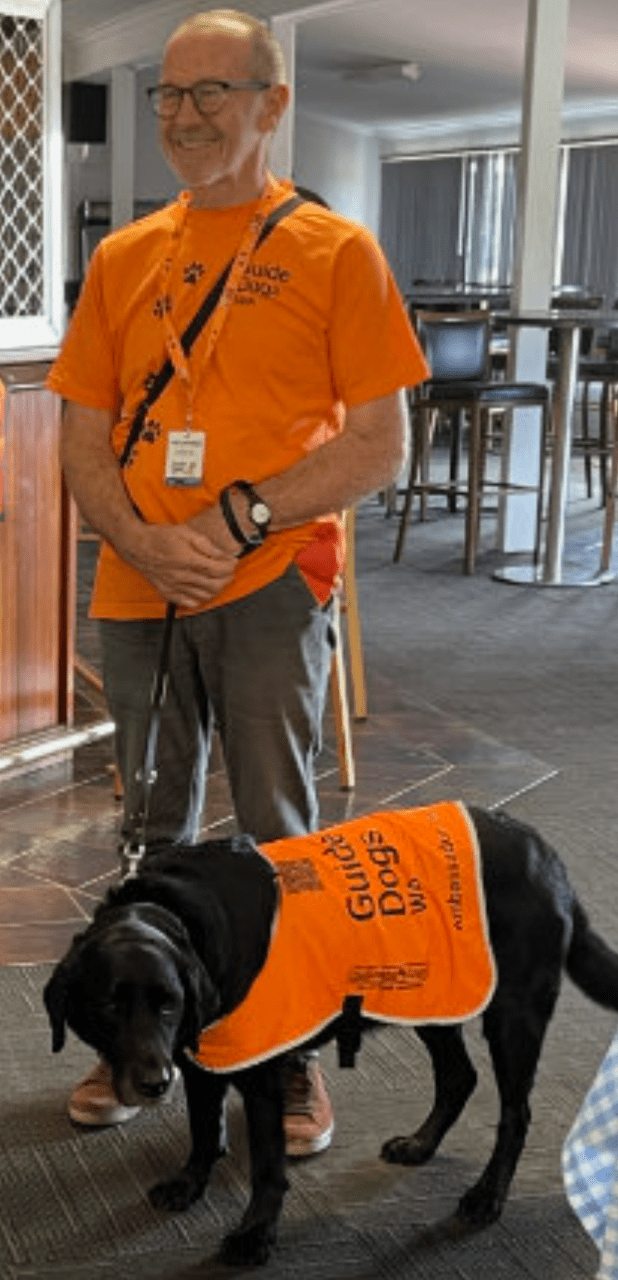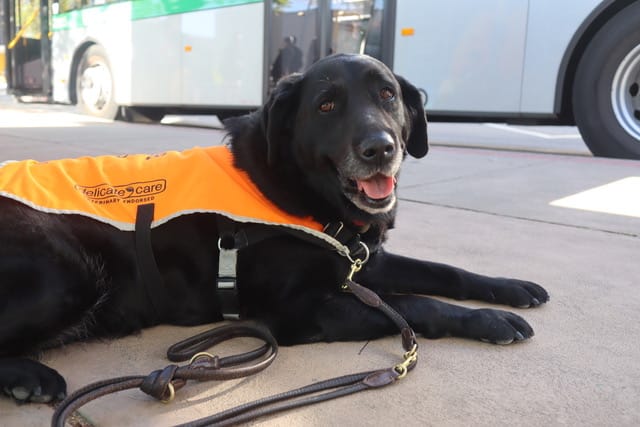Eva, a nine-year old Labrador-Retriever cross is a Guide Dogs WA ambassador and she is on call for all their public relation needs.
She is a meet-and-great dog; she visits primary schools and business organisations to raise awareness of Guide Dogs WA and help raise much-needed funds.
She has visited the police call centre, helping operators chill out between emergency calls. She visits Sir Charles Gairdner Hospital emergency department and makes weekly visits to the Children’s Hospital and Ronald McDonald House where she sits in the foyer bringing a smile to the faces of sick children.
She has even planned to visit cancer wards but this has been sidelined because of the risk of introducing new pathogens to immune-compromised patients who are receiving chemotherapy.
Eva was raised by volunteers John and Annette Davies to be a guide dog. She received standard guide dog training but had to be reassigned for health reasons.
Guide Dogs WA offered Eva to John and Annette as a pet, but after discussion it was decided to find an ambassadorial role for her.
Eva has no guiding ability, but retains her right to access shops, restaurants and all places where other dogs are banned.
John retired 11 years ago after running a graphic design studio.
“Annette and I had never had a dog. We wanted to do something good in retirement and volunteering with Guide Dogs WA seemed the right thing to do.
“Unlike owning a dog, where you are committed for the length of their life, we could back out if it did not work out.”
They became puppy raisers. Volunteers who receive an eight-week-old puppy and raise it until ready for formal training at about two years.
“It’s a full-time job,” said John.
Puppy raisers welcome a puppy into their home and teach the young pup basic obedience and socialisation. Puppy raisers are guided through the process of preparing for formal training by a weekly visit from a Guide Dogs WA trainer.
Guide Dogs WA provide food and regular veterinary inspection and treatment.
Once toilet trained, they introduce their puppy to the environments and experiences it will encounter as a working dog. They are encouraged to take the puppy with them into shops, restaurants, on public transport and everywhere they go.

“We take them to the training centre regularly. They are trained to work with other people, not just me,” said John.
“The trainer assesses the progress of the puppy and decides their future. Between 50 and 60 per cent make the grade as guide dogs. Some of the other dogs become companion dogs for children and adults with disabilities or autism.
“It cost $50,000 and takes two years to raise and train a guide dog. It is a big investment and Guide Dogs WA needs to get a good outcome.”
John and Annette have been puppy raisers for ten years but there’s always the heartache of having to pass the pup on.
John said that his basic advice was to ignore guide or assistance dogs.
“When it’s out with its handler or in a jacket, it is working and the person who is with it is also concentrating.
“Some guide dog users will be counting the number of streets they have to cross before they turn, or that there’s 27 steps to the bus stop.
“If you interrupt such people they can actually lose where they are. Just ignore the dog. Don’t cuddle them or offer them food,” he said.
Guide dogs have to concentrate on the person they are guiding and often make challenging decisions for them, such as when to cross a busy road.
John says ambassador dogs have got the job every dog wants. They represent Guide Dogs WA in the media and at events and are free to socialise with the public. It is not the proverbial dog’s life.
“Eva has a great life, she’s special. She’s allowed to be a dog; she gets to go everywhere. All guide dogs are well looked after. They have a great life,” he said.



































